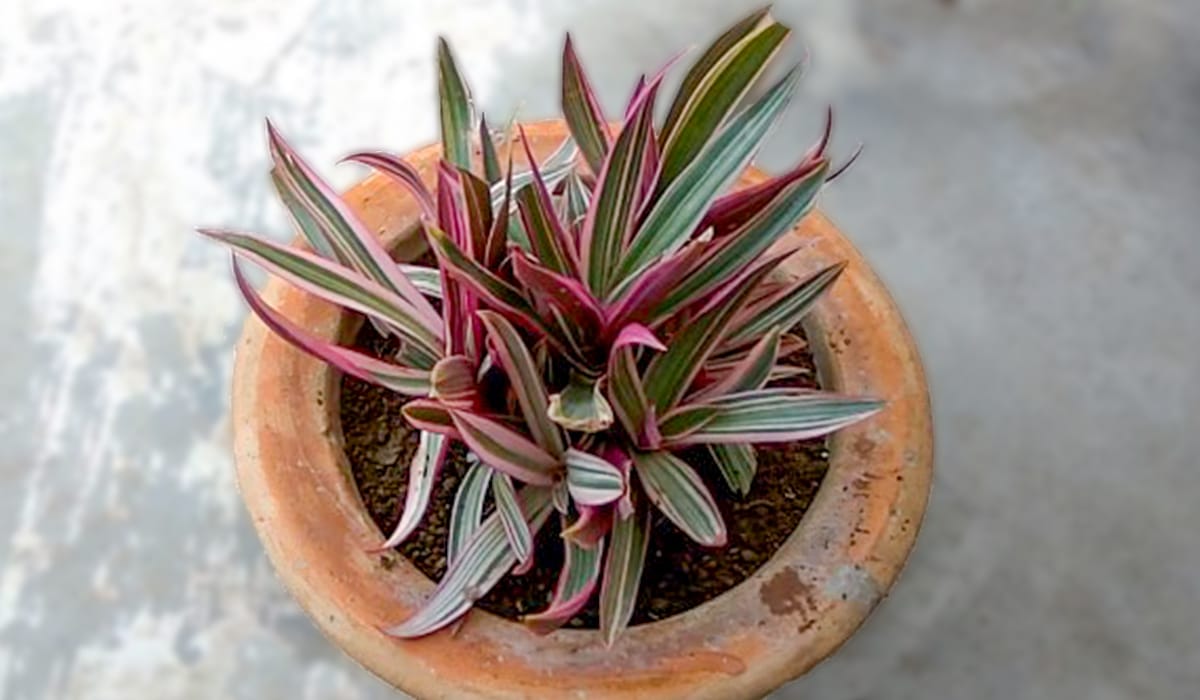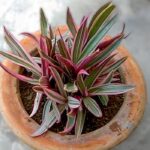Our busy day to day life has taken over our pleasure and hobbies . Relaxing and de-stressing are becoming mandatory to have a healthy life style. In the art of taking care of our own health, growing indoor plants takes a noticeable place. In this blog, we will be exploring the pink spider plant(Chlorophytum comosum) and how to grow and take care of it.
According to the research on indoor plants,conducted by National Institute of health, The review of studies showed that having indoor plants can significantly lower people’s diastolic blood pressure (by 2.526 points) and improve their academic performance (by 0.534 points). Indoor plants also influenced brain activity, attention, and response time, but these changes were not significant. Overall, to make cities healthier and help people function better, we need not only green spaces outside but also plants inside buildings.
Pink spider plants (Chlorophytum comosum) also called as Airplane plants ,are attractive and delicate indoor plants that many people are starting to love. They are famous for their small, spider-like offshoots, called spiderettes, and their bright pink colours. These features make them look elegant and add beauty to any room. For ideas about growing plants indoors , check out Healthy indoor plants for home decor
Characteristics
Appearance: Pink spider plants have long, narrow leaves that can be green with pink stripes or fully pink. The small spiderettes dangle from the main plant, giving it a unique look.These plants are famous for cleaning the air and removing toxins like formaldehyde and xylene, creating a healthier indoor environment. They are suitable for both beginners and experienced plant lovers because they can thrive in various lighting conditions.
Size: They are usually small to medium in size, making them perfect for indoor spaces like homes and offices.The pink spider plant occasionally produces small, sweet-smelling flowers throughout the year. These flowers attract beneficial pollinators like butterflies and bees to your space.
| Botanical name | Chlorophytum comosum |
| Common names | Pink spider plant, Spider plant, Airplane plant |
| Family | Asparagaceae |
| Native to | South Africa |
| Maximum height | 8 to 18 inches |
| Lighting | Indirect bright light |
| Flower | Small white flowers |
| Toxicity | Safe for pets, non-toxic |
Maintenance and Care
Light: They prefer bright, indirect sunlight to produce the vivid pink colours. Too much direct sun can scorch their leaves, while too little light can make the colors fade.
Watering: Water them regularly, but don’t let the soil get too wet. It’s best to water when the top inch of soil feels dry.
Temperature and humidity: They thrive in average room temperatures, between 65°F to 75°F (18°C to 24°C).They like humid environments. You can mist the leaves occasionally to keep them happy.
Fertilising : Fertilise pink spider plants every two to four weeks during the growing season (spring and summer) with a balanced liquid fertilizer. This helps the plant produce spiderettes and supports healthy growth.
Propagation : Pink spider plants need only minimal regular pruning. Trim any browning or yellowing leaves to keep them looking their best. You can easily propagate new plants by planting spiderettes in fresh soil and allowing them to grow into stand-alone plants.
Common Varieties
Some of the well known types of spider plants are
- Chlorophytum comosum Bonnie: It is known for its curly and green striped leaves.
- Chlorophytum comosum Vittattum: It has a creamy white colouring at the center of the leaves.
- Chlorophytum comosum Variegatum: It features white colour throughout edges of the leaves. It has the inversed colouring of Vittattum
- Chlorophytum comosum ocean: It has the short and wider varigated leaves which gives spiky appearance.
- Chlorophytum comosum Mandaianum: It is a dwarf plant variety perfect for small spaces. It has dark green leaves with yellow stripes at the center
Disease:
Spider plants often get pests like scales, aphids, mites, and white flies. You can usually get rid of these pests by using horticultural neem oil . To keep the plants healthy, regularly check for pests and quickly treat any infestations with insecticidal soap.
Appeal
- Aesthetic: The pink spider plant adds a pop of colour and elegance to any room.
- Air Purification: Like other spider plants, they can help clean the air by removing toxins.
- Minimum maintenance: they can easily adapt to different light conditions which makes it easier to grow indoors.
- Lesser Space: Pink Spider plants can grown in a single pot. Its compact size makes it suitable for indoors.
Toxicity
Most pink spider plants are non-toxic and safe for both people and animals. While the plant itself is harmless, be cautious with the spiderettes, as they could be a choking hazard if swallowed.
In summary, pink spider plants are beautiful and easy-to-care-for houseplants that bring colour and sophistication to any indoor space. With their striking appearance and air-purifying qualities, it’s no wonder they are becoming a favourite among plant enthusiasts. Grow plants! Stay Happy!
FAQs
How to take care of a pink spider plant?
Pink spider plants are low maintenance plants and don’t need much watering. Always water your plant the required amount. Touch the soil to see if its dry ,if so water it. However under-watering can lead to leaf browning and wilting whereas over- watering can make the roots rot. Watering once in one to two weeks may be enough in most conditions.
Can i grow pink spider plants in water?
Yes, you can propagate the pink spiderettes in water till they produce roots. Once roots are developed you can pot the plant in soil.
When to re-pot the pink spider plants?
It is recommended to re-pot the pink spider plants every one or two years. Upgrade to a slightly larger pot to contain the over grown roots which encourages healthy growth.
Are pink spider plants toxic to pets?
No, the pink spider plants are generally non-toxic for pets. However swallowing of small parts of plants or spiderettes may cause chocking in pets. It is advisable to keep the plants out of reach for them.
Why my spider plant is not producing spiderettes ?
Give your plant the required conditions. Too much of water or getting too dry, if its too hot or too cold, it can’t get adapted to them. Also if the pot is a little much bigger than required, it may need some days to produce roots to fill the pot soil to produce offspring.





Leave a Reply